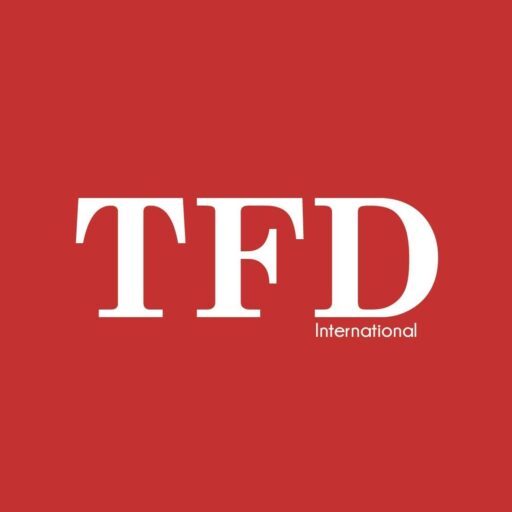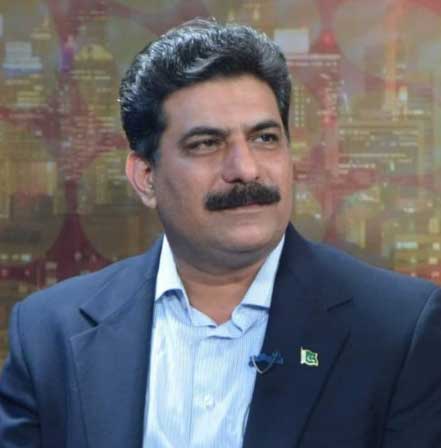The first two weeks of May proved to be a significant and tense period in the recent chapter of India-Pakistan relations. The escalation that followed the Pahalgam incident marked a notable rise in hostilities, culminating in an exchange of military actions that caught the attention of the international community. The situation, however, was not only shaped by the actions on the battlefield but also heavily influenced by the conduct of the media, especially on the Indian side.
Following the Pahalgam incident, tensions flared quickly. India launched an offensive against Pakistan, which responded with what was described as a “befitting retaliation.” According to reports from Pakistani sources, the Pakistan Air Force shot down six Indian fighter jets-a major military response that sent a clear signal of Pakistan’s defense readiness. This exchange brought the region dangerously close to a full-scale war.
Recognizing the escalating threat, the United States intervened diplomatically. The U.S. President’s involvement helped broker a ceasefire, bringing a temporary halt to the rising aggression between the two nuclear-armed nations. However, while military operations were contained, another parallel conflict was playing out on television screens and social media platforms-one where Indian media was seen by many as behaving in a deeply unprofessional and inflammatory manner.
During this conflict, Indian mainstream media, particularly television channels, exhibited behavior that many analysts and observers labeled as sensationalist, irresponsible, and factually incorrect. Leading anchors and supposed experts turned newsrooms into virtual war zones, where shouting matches and emotional rhetoric replaced calm and analytical reporting. It appeared as if many of them were more invested in fanning the flames of conflict than providing sober and factual coverage to their audiences.
One of the most glaring issues was the spread of misinformation and disinformation. Indian news anchors demonstrated a surprising lack of geographical knowledge. For instance, some reports questioned whether Lahore, one of Pakistan’s largest cities, was near the sea-something that any basic geography student would know is not true. This lack of basic information undermined their credibility and cast doubt on the quality of journalism being practiced.
False reports of widespread destruction in Karachi and exaggerated claims about the scale of the war were frequent. These misrepresentations contributed to a false narrative and unnecessary panic within Indian society. Instead of acting as a calming force, Indian media appeared to be provoking the public, encouraging nationalism through half-truths and speculative statements.
The line between journalism and propaganda became increasingly blurred during this period. Indian media’s aggressive stance seemed in alignment with the political ideology of the ruling establishment and its allies, particularly the Rashtriya Swayamsevak Sangh (RSS). Critics argue that the media narrative was carefully shaped to support government positions and incite emotional responses among the Indian public, rather than deliver balanced reporting.
There were calls for war from television studios. Instead of highlighting the need for peace or focusing on the humanitarian implications of a conflict between two nuclear states, several news channels seemed eager to escalate the situation. Studio discussions often resembled political rallies or jingoistic battlegrounds rather than informed panels of security experts or foreign policy analysts.
This kind of coverage not only harmed India’s international image but also damaged public trust. Even within India, intellectuals, academics, and communication experts expressed disappointment. The media’s failure to uphold professional ethics and factual reporting led to widespread criticism from the educated segments of Indian society
Indian social media also played a significant role in shaping public opinion during the conflict-but not always in a constructive way. Unverified videos, fake images, and misleading tweets flooded platforms like Twitter, WhatsApp, and Facebook. These digital spaces became echo chambers of misinformation, with very little content moderation or fact-checking.
Unlike professional journalism, social media thrives on immediacy and virality. Indian users, many influenced by TV news rhetoric, engaged in heated online debates, with hashtags trending that called for revenge or further aggression. There was little room for nuance or diplomacy in this digital battlefield.
In contrast, Pakistani media-though not free from bias-seemed relatively more measured in its tone. While national pride and defensive rhetoric were certainly present, the overall response included official briefings, facts, and attempts to control rumors. This difference in approach did not go unnoticed by international observers and contributed to a growing perception that Indian media was failing to meet journalistic standards.
India, with its vast media infrastructure and growing global influence, had a unique opportunity to demonstrate maturity, responsibility, and professionalism during a time of crisis. However, the performance of its mainstream media during this conflict left much to be desired.
Instead of presenting itself as a responsible regional power, India’s media spectacle contributed to a narrative of aggression, misinformation, and emotional instability. As a result, India struggled to gain global sympathy or support in this episode. International media outlets, think tanks, and even foreign diplomats expressed concern over the aggressive tone of Indian media and the lack of factual integrity.
On the other hand, Pakistan’s response-military, diplomatic, and media-related-was seen as relatively restrained and calculated. By projecting a composed image, Pakistan managed to enhance its global standing. Its institutional credibility, especially in defense and diplomacy, was viewed more favorably. Media outlets in Pakistan provided coverage that appeared more aligned with international standards, contributing to a narrative of responsible state behavior.
This entire episode serves as a case study for students and practitioners of journalism, mass communication, and international relations. It demonstrates the critical importance of ethical journalism, fact-checking, and responsible reporting, especially during times of conflict.
The conduct of Indian media highlighted what happens when journalistic responsibility is compromised in favor of sensationalism and political alignment. It showed how misinformation can inflame tensions, divide societies, and erode trust in institutions. The body language of Indian TV anchors-aggressive, shouting, interruptive-further undermined the credibility of their profession.
Moreover, this incident underlines the importance of knowledge and preparation. The inability of some Indian journalists to grasp basic geopolitical facts, military terminology, or international law was embarrassing. It became evident that ideological commitment had taken precedence over journalistic training and ethical standards.
The recent India-Pakistan conflict exposed serious flaws in the functioning of Indian mainstream media. Rather than serving as a pillar of democracy and information, it became a mouthpiece of conflict, misinformation, and emotion-driven coverage. This not only tarnished the credibility of Indian media in the eyes of the world but also eroded public trust domestically.
Pakistan, by comparison, gained significant diplomatic and perceptual ground. Its professional handling of military communications, its composure in public messaging, and its restrained media tone contributed to a more positive international image.
Indian media has a long history and rich tradition of vibrant journalism. However, this conflict should serve as a wake-up call. Institutions, journalists, and regulators must introspect and reform. There is an urgent need to rebuild public trust, reaffirm journalistic ethics, and ensure that the media plays a constructive role in nation-building and peacekeeping rather than fueling fire in volatile times.





